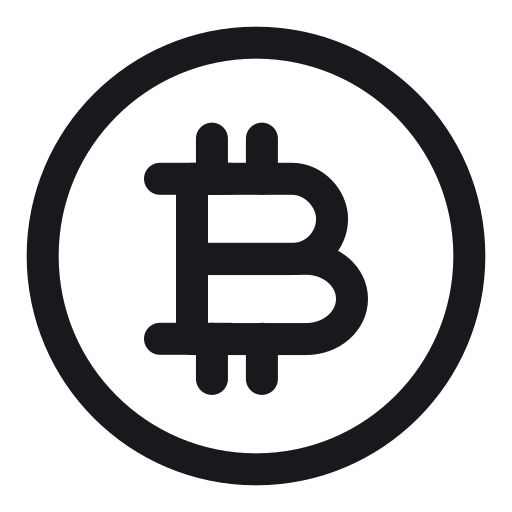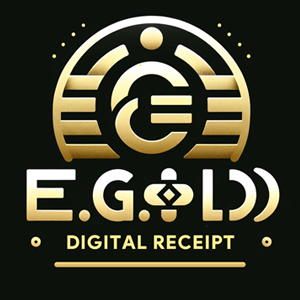
In the intricate web of global financial markets, Bitcoin and gold stand as two pillars of alternative investment, each embodying distinct yet overlapping roles as stores of value. Bitcoin, often dubbed "digital gold," represents technological innovation and scarcity in a decentralized form, while physical gold has endured for millennia as a tangible hedge against economic turmoil. As of November 11, 2025, Bitcoin trades around $105,000, reflecting a year-to-date gain of over 20%, while gold hovers near $4,100 per ounce, up more than 40% in the same period. Yet, their price trajectories are not always synchronized, revealing a complex interplay influenced by macroeconomic forces, investor sentiment, and regulatory shifts.
Understanding these dynamics is crucial for investors seeking to forecast interactions between the two assets. This article delves into historical patterns, key drivers, and predictive models to illuminate how Bitcoin and gold prices may evolve, offering insights for portfolio diversification in an era of persistent inflation and geopolitical uncertainty.
Historical Correlation: From Decoupling to Rekindling
The relationship between Bitcoin and gold prices has evolved dramatically since Bitcoin's inception in 2009. Early on, the two assets exhibited near-zero correlation, with Bitcoin behaving more like a high-risk tech stock, closely tied to the Nasdaq's fluctuations. From 2015 to 2024, Bitcoin's monthly returns showed a strong positive link to the S&P 500—often exceeding 0.5—while its correlation with gold remained statistically insignificant, around 0.09 on average.
This decoupling peaked in 2022-2024, when both assets surged amid post-pandemic monetary easing: gold rose 67%, while Bitcoin exploded nearly 400%. However, by early 2025, divergence emerged. Gold benefited from central bank purchases and inflation fears, outpacing Bitcoin, which grappled with regulatory hurdles and equity market volatility. The Bitcoin-to-gold ratio formed a double-top pattern, testing 2017 highs but failing to break through, underscoring gold's resilience during macroeconomic stress.
By mid-2025, a shift occurred. Bitcoin's 30-day correlation with gold strengthened to 0.70, while its Nasdaq tie weakened to 0.53. As equity markets stagnated, both assets rallied in tandem—Bitcoin breaking $118,000 in October as gold hit $3,895 per ounce—driven by shared safe-haven demand. This renewed positive correlation, now evident in rolling 1-year metrics, suggests investors increasingly view them as complementary hedges against fiat debasement, though Bitcoin's higher volatility (often 3-5 times gold's) introduces asymmetry.
Key Market Drivers Influencing Price Interactions
Several macroeconomic and behavioral factors dictate how Bitcoin and gold prices interact, often amplifying or dampening their correlation.
Inflation and Interest Rates: Both assets thrive in low-rate environments, as opportunity costs for holding non-yielding stores of value diminish. In 2025, persistent inflation expectations—fueled by deficits and supply chain disruptions—propelled gold's rally, with central banks adding over 1,000 tons to reserves. Bitcoin, while less sensitive to traditional inflation metrics, benefits indirectly through monetary expansion narratives. However, rising rates could decouple them: gold suffers from higher yields on bonds, while Bitcoin's growth-stock-like behavior amplifies sell-offs.
Geopolitical and Economic Uncertainty: Events like trade tensions or policy shifts boost demand for both. Gold's physical allure draws conservative institutions, while Bitcoin appeals to those seeking borderless portability. In 2025, U.S. tariff escalations and global instability correlated with simultaneous upticks, but Bitcoin's exposure to tech sector risks (e.g., Nasdaq drawdowns triggering margin calls) can lead to sharper corrections.
Investor Sentiment and Adoption: Bitcoin's price is swayed by retail hype and institutional inflows via ETFs, which have absorbed billions in 2025. Gold, conversely, sees steady pension fund allocations. Sentiment indicators like the VIX show Bitcoin amplifying volatility spillovers from stocks, while gold acts as a dampener. Machine learning analyses reveal oil prices and the U.S. Dollar Index (DXY) as common predictors: a weakening dollar lifts both, but oil shocks disproportionately favor gold.
Regulatory Environment: Bitcoin's "digital gold" narrative strengthens with clearer regulations, potentially tightening correlations. In 2025, evolving U.S. policies have boosted Bitcoin's legitimacy, narrowing the gap with gold's established status.
These drivers create a dynamic where short-term divergences (e.g., Bitcoin's tech correlation) give way to long-term convergence during crises, with their combined market cap reaching ~$30 trillion—20% of global money supply.
Forecasting Models: Tools for Predicting Interactions
Forecasting Bitcoin-gold interactions requires blending traditional econometrics with advanced analytics, given their non-linear behaviors.
Econometric Approaches: Vector Autoregression (VAR) models capture spillovers, showing Bitcoin as a net volatility receiver from gold and stocks during high-uncertainty periods like 2025's early corrections. Dynamic Conditional Correlation (DCC-GARCH) reveals time-varying links: correlations spike above 0.5 during equity downturns but fade in bull markets. Threshold models highlight asymmetries—downside shocks in stocks propagate more to Bitcoin than gold.
Machine Learning and AI Insights: Neural networks like CNN-LSTM outperform linear regressions, incorporating features such as VIX, DXY, and oil prices for 75-85% accuracy in 5-20 day direction forecasts. Random forests emphasize technical indicators (e.g., moving averages) over macro variables like inflation, suggesting market inefficiencies. Deep learning uncovers Bitcoin's sensitivity to gold during low-volatility regimes, predicting joint rallies when money supply grows.
Scenario-Based Projections: WisdomTree's models forecast Bitcoin capturing 10% of hard assets by 2030, implying prices of $150,000-$200,000 if correlations hold. In a high-inflation scenario (CPI >3%), both could surge 20-30%; a rate-hike regime might see gold outperform by 15% while Bitcoin dips 10-20%.
These tools underscore that while correlations are fluid, monitoring rolling metrics provides early signals of regime shifts.
| Factor | Impact on Gold | Impact on Bitcoin | Interaction Effect |
|---|---|---|---|
| Rising Inflation | Strong positive (safe-haven demand) | Moderate positive (fiat hedge narrative) | Tightens correlation; joint upside |
| Equity Market Crash | Positive (flight to quality) | Negative (risk-off sell-off) | Decouples; gold outperforms |
| Dollar Weakening | Positive (inverse relation) | Positive (global adoption boost) | Amplifies co-movement |
| Regulatory Clarity | Neutral (established asset) | Strong positive (institutional inflows) | Bitcoin catches up to gold's stability |
| Tech Sector Volatility | Neutral | High negative (Nasdaq linkage) | Widens short-term divergence |
Investment Implications: Navigating the Interplay
For investors, the evolving Bitcoin-gold dynamic offers diversification opportunities. A balanced allocation—e.g., 60% equities, 20% gold, 10% Bitcoin, 10% bonds—can reduce portfolio volatility by 15-20%, per backtests. In 2025's environment, gold provides ballast during Bitcoin's swings, while Bitcoin adds asymmetric upside.
Start small: Use ETFs for exposure without storage hassles. Monitor the BTC/gold ratio for rebalancing signals—if it exceeds historical resistance (e.g., 2017 levels), trim Bitcoin; below support, add. Stay vigilant on macro cues like Fed announcements, which could pivot correlations overnight.
Conclusion: Toward a Dual-Hedge Future
The market dynamics between Bitcoin and gold are a tale of convergence and contrast, with 2025 marking a pivotal year of rekindled ties amid economic headwinds. As forecasting models grow sophisticated, investors can better anticipate interactions, leveraging their complementary strengths: gold's steadiness and Bitcoin's growth potential. In a world of expanding money supplies and eroding trust in fiat, both assets are poised for prominence—not as rivals, but as pillars of resilience. By grasping these forces, you position yourself to thrive in the next cycle of financial evolution.
NOTE
This Content is the copyrighted content of EE.GOLD. All rights are reserved. You are welcome to share or use our content only by including direct links to our website. Any other form of reproduction, distribution, or use without proper attribution is strictly prohibited.
This Content is intended solely for educational purposes. The information provided does not constitute financial or investment advice.
Please note that Digital Storage Receipt, Secure Storage Solutions, and Physical Gold Sales are the only services offered by EE.GOLD.
We strictly adhere to government regulations and are firmly against all illegal financial or investment activities globally.
For further inquiries, feel free to contact us through our official channels.










.png)

